They say… 
Best beer and travel writing award 2015, 2011 -- British Guild of Beer Writers Awards
Accredited Beer Sommelier
Writer of "Probably the best book about beer in London" - Londonist
"A necessity if you're a beer geek travelling to London town" - Beer Advocate
"A joy to read" - Roger Protz
"Very authoritative" - Tim Webb.
"One of the top beer writers in the UK" - Mark Dredge.
"A beer guru" - Popbitch.
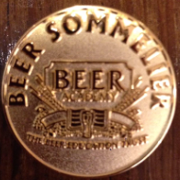
|
Top Tastings 2010
ABV: 8%
Origin: Lembeek, Vlaams-Brabant, Belgium
Website: www.boon.be
 Boon Oude Geuze Mariage Parfait In 1977, after a period perfecting the skill of lambic blending at the old De Vit blender and former brewery in Lembeek, Frank Boon became the first person in decades to start a new brewery specialising in spontaneously fermented lambic beers on the same site, in the village that’s the spiritual home of the style in the Pajottenland near Brussels. At the time lambic seemed in terminal decline, but Frank was one of the people that helped establish its profile on the developing international beer appreciation scene, and he’s since become one of the most successful ambassadors for real lambics. A longstanding partnership with Belgian new national Palm has helped provide wide distribution.
The ‘Perfect Marriage’ series of beers, blended from the best barrels of lambic selected by the brewer and at a considerably higher strength than is normal for the style, are the pinnacle of Boon’s craft. 90% of the blend for this geuze comprises mature lambic of around 18 months old, about 5% is three year old beer and the rest young beer with adequate unfermented sugar and live yeast to develop a fresh sparkle. The various beers are mixed in a 25,000l capacity blending vessel, cooled, bottled and returned to fermentation temperature in a temperature controlled room. They then enjoy a long, cool maturation before being released.
A well-matured 2001 example made an appearance at the Zythos Beer Festival in 2010. With the reddish-amber ‘foxy’ colour of a good mature lambic, it had a fine white head and a sweet-sour aroma reminiscent of wet plastic, with a vinegar note. The palate was beautifully lambic-sour, but very approachable for the style, with tasty, complex apple pippy fruit, and a slightly creamy texture with some sweet notes. A chewy, fruity applecore finish developed tart notes way back in the mouth, with an emerging and lasting nuttiness and edges softered and rounded by maturity. Sublime.
Read more about this beer at ratebeer.com: http://www.ratebeer.com/beer/boon-oude-geuze-mariage-parfait/12027/
Top Tastings 2010
ABV: 5.8
Origin: Trabelsdorf (Lisberg), Franken/Bayern, Germany
Website: www.beck-braeu.de
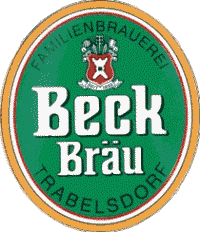 Beck Bräu Trabelsdorf Not to be confused with the massive AB InBev subsidiary in Bremen, Beck Bräu is a brewpub in a small village in the hilly, wooded country of Upper Franconia’s Steigerwald. Over the past few years a number of its beers have found their way to British beer festivals, but the brewer responsible for expanding this trade, Andreas Gänstaller, gave up the lease at the end of 2010 and took over the old Friedel brewery in Schnaid. Brewing in Trabelsdorf may yet be revived by the property owner’s son but the brands might be different.
This fresh, unfiltered lager, enjoyed several months before the move at the Battersea Beer Festival, was an excellent example of Andreas’ skill. A deep gold, almost amber, in colour, it had a generous off-white head, and a relatively restrained malty and creamy aroma with a lightly perfumed touch. The palate was full, natural and rather yeasty with honeyed malt, generous biscuity flavours and a notably edgy and very clean and distinct dose of hops. A long, drying chewy finish with a slightly vegetal hop character turned slightly peppery and chalky. A delightfully refreshing beer — Andreas will be one to watch at his new home.
Read more about this brewery’s beers at ratebeer.com: http://www.ratebeer.com/brewers/brauerei-beck-trabelsdorf/3701/
Top Tastings 2010
ABV: 10.5%
Origin: Boulder, Colorado, USA
Website: www.averybrewing.com
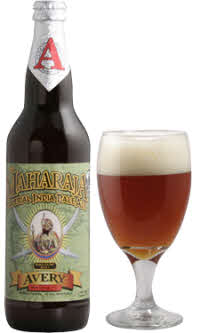 Avery Maharaja Imperial India Pale Ale Regularly topping polls of the world’s best beers, this super-hopped pale ale comes from a Colorado brewery founded by home brewer Adam Avery in 1993, since much expanded and greatly admired for its cutting edge repertoire of extreme hop beers and barrel aged specialities. I picked up my ‘bomber’ bottle at Argonaut in Denver.
Made from two-row pale, caramel 120L and Victory barley malt, with Simcoe, Columbus, Centennial and Chinook hops added in numerous additions to a whopping 102 IBUs, this is a reddish copper beer with a fine yellowy off-white head, taking its name from the Sanskrit word meaning ‘Great King’. Unsurprisingly the aroma is pungently hop dominated, a complex haze of soapy, piny, coconut and fruit notes.
The smooth nectary palate soon develops a piny hop bite, with notes of citrus, wood polish and tropical fruit. The finish is drying but surprisingly rounded, with pungent and vivid resinous hop flavours and mint, though softened by an almost honeyed touch. It is indeed a very hoppy beer, but achieves an impressive delicacy around its vivid flavours which should explain why it’s held in high regard compared to some more aggressive entries in the genre.
Read more about this beer at ratebeer.com: http://www.ratebeer.com/beer/avery-the-maharaja-imperial-india-pale-ale/44485/
Originally published in BEER February 2011. Click on the links for extended reviews.
 Hardknott Granite 2009 The good Real Ale in a Bottle just keeps on coming, and this column can barely keep pace! And pleasingly, many of the new bottlers aren’t just bottling cask but aim to tempt a discerning audience with something special.
An excellent example is the Hardknott Brewery deep in the Lake District. Their bottled range includes a tasty 6.5% “oxymoronic ruby red IPA” and a complex 8% barrel aged Imperial Stout. But my pick of a very strong bunch is Hardknott Granite (10.4 per cent), a dry hopped dark ruby barley wine with a rich caramel malt palate set off by chewy hops, spice and an odd but pleasing whiff of Stilton cheese. A vinous, sherryish finish yields chewy roast and slightly burnt tones, plum jam and tobacco. Brewer Dave Bailey is also one of Britain’s most respected and perceptive beer bloggers, and demonstrably practices what he preaches. The flair and imagination in these beers marks him out as a brewer to watch.
Also exercising his imagination is John Bates at Ole Slewfoot brewery near Norwich, named after a bear in a Johnny Horton song. His range of corked and wired 375ml bottles includes Red Wing (5.1 per cent), an attempt at a Flemish red ale with a whiff of roses on the woody aroma. It’s lightly sour – I suspect the addition of brettanomyces yeast – with fruity malt, chocolate, and an authentic irony tang. While not a clone of any Belgian original it’s impressively true to style and very drinkable in its own right.
Green Jack in Lowestoft are unafraid to put strong stuff on the bar and they’re now putting some of it in handsome swing top 750ml bottles, including Green Jack Ripper (8.5 per cent), their award winning barley wine-cum-abbey tripel. This blond beer has a citric, peaches and cream aroma with mineral notes and a grainy, herby palate (coriander, perhaps?) with a distinct note of apricot jam. Rooty hops finally emerge on a spicy dry finish to give a bitter kick that’s pronounced but not excessive.
I admire Edinburgh micro Stewart’s for reflecting Scotland’s distinct brewing tradition in their beers, unlike some of their peers. Among their new bottle conditioned range is the very Scottish Stewart’s St Giles, named after the landmark Presbyterian High Kirk on the capital’s Royal Mile. It’s a cherry red beer with a ripe cinder toffee and malt aroma and a classic malty-fruity palate. Burnt cake and a gentle hint of hops dry the soothing caramel-tinged finish, ideal for relaxing with after a bracing winter stroll in Holyrood Park.
Blythe Ridware Pale, hand bottled deep in rural Staffordshire, is a strikingly pale and delicate yellow colour with a fruity and flowery lemon and honey aroma. A crisp, dry, lightly bitter palate has floral and mineral hints and the tasty finish develops earthy pepper flavours over plenty of firm and fruity malt. This perfectly balanced and very refreshing beer is one of the best I’ve tried of the new breed of bitterish golden ales.
Top Tastings 2010
An extended review of a beer featured as a new real ale in a bottle on the bottled beer review page in the February 2011 issue of BEER magazine, sent free every quarter to CAMRA members, who can also view it online. The magazine is additionally available in selected newsagents.
ABV: 4.3%
Origin: Hamstall Ridware, Staffordshire
Website: www.blythebrewery.co.uk
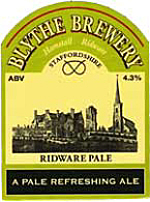 Blythe Ridware Pale Relatively new to bottle conditioning is the Blythe brewery at Hamstall Ridware in rural Staffordshire, which very successfully produces packaged versions of its cask beers by hand bottling. The standout beer from the range is Ridware Pale, a very pale, hoppy bitter that started as a summer seasonal but is now available year round.
A delicate yellow with fine white foam, the beer gives off a delightful fruity and flowery lemon and honey aroma with perhaps a slight sulphury note. A crisp, dry, lightly bitter palate is superbly balanced, with decent pale malt and poised hop bitterness enlivened by floral and mineral hints.
A refreshing swallow leads to a fresh, tasty finish with the very British resiny burr of quite assertive but not overstated hops. Earthy pepper flavours slowly emerge over plenty of firm and fruity malt. One of the best I’ve tried of the new breed of bitterish golden ales.
To download BEER if you’re a CAMRA member, see http://www.camra.org.uk/page.aspx?o=beer.
To find out more about CAMRA membership, see http://www.camra.org.uk/page.aspx?o=joinus.
Read more about this beer at ratebeer.com: http://www.ratebeer.com/beer/blythe-ridware-pale/88027/
An extended review of a beer featured as a new real ale in a bottle on the bottled beer review page in the February 2011 issue of BEER magazine, sent free every quarter to CAMRA members, who can also view it online. The magazine is additionally available in selected newsagents.
ABV: 5%
Origin: Newington, Edinburgh, Scotland
Website: www.stewartbrewing.co.uk
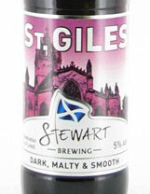 Stewart St Giles I appreciate Edinburgh micro Stewart’s, founded by ex-Bass brewer Steve Stewart and his partner Jo in 2004, for brewing at least some cask ales that are unapologetically Scottish in character, reflecting the country’s distinct tradition – not always the case with the current crop of micros north of the border. I was delighted to hear they now have a bottle conditioned range, from which St Giles, named after the landmark Presbyterian High Kirk on the capital’s Royal Mile, stands out as the best and most Scottish of the ones I’ve tried.
This deep cherry red beer has a ripe and malty aroma with spiced cinder toffee notes, and a classic malty-fruity palate with cereal malt and toffee lifted by gently roasty dryness. A long chewy sappy light caramel finish is mainly dried by developing burnt cake and roast notes, with a gentle hint of hops. A warming, soothing glassful for an Edinburgh winter day.
To download BEER if you’re a CAMRA member, see http://www.camra.org.uk/page.aspx?o=beer.
To find out more about CAMRA membership, see http://www.camra.org.uk/page.aspx?o=joinus.
Read more about this beer at ratebeer.com: http://www.ratebeer.com/beer/stewart-st-giles/115585/
An extended review of a beer featured as a new real ale in a bottle on the bottled beer review page in the February 2011 issue of BEER magazine, sent free every quarter to CAMRA members, who can also view it online. The magazine is additionally available in selected newsagents.
ABV: 5.1% and 7.7%
Origin: Hainford, Norwich, England
Website: www.oleslewfootbrewery.co.uk
 Ole Slewfoot Red Wing John Bates’ Old Slewfoot brewery at Hainford near Norwich, founded in 2009, is one of a small but growing number of brewers using bottle conditioning to explore unusual styles in controllable batches. There’s an nod across the Atlantic in the brewery name – from a bear in a song by Johnny Horton and the bottled beers I’ve tried take something of an American approach to mixing and matching styles in a range of Belgian-inspired beers in 375ml corked and wired bottles.
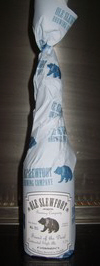 Ole Slewfoot Friend of the Devil Red Wing (5.1%) is John’s take on a Flemish sour red ale. It’s a burgundy colour with some pinkish head and quite a low carbonation, with a sharpish cherry note and a whiff of roses on a fruity, slightly woody aroma. The palate is only lightly sour – presumably through the use of an inoculated wild yeast – with chocolate, fruity malt and an irony tang appropriate to the style. A satisfying finish has tangy fruit, wood polish and a bit more chocolate. An intriguing beer – not a clone of the Belgian originals but recognisably in the style, and distinctive in its own right.
Friend of the Devil (7.7%) acknowledges a debt to strong golden ales of the Duvel variety in its name and a notable pear hint, but its deeper colour puts it into the amber camp. Aside from pear there’s malt and brown sugar in the aroma, and biscuity, fruity malt on the palate, which is slightly sugary, nutty and perhaps a touch musty. A touch of hops lifts a nutty, chewy finish, but overall the beer didn’t quite work for me.
The experimental Friend of the Devil Brett Version, dosed with Brettanomyces yeast and not tasted yet by John himself when he sent me the bottle, shifts the character of the base beer in an interesting way. This beer had a good condition with a champagne like fizz and that distinctive wet plastic brett aroma. A flowery, lightly biscuity and nutty palate had tangy acid balanced by firm malt, leading to a slightly figgy, chewy, toasty finish with lingering nuttiness and a touch of hops. An experiment worth pursuing.
To download BEER if you’re a CAMRA member, see http://www.camra.org.uk/page.aspx?o=beer.
To find out more about CAMRA membership, see http://www.camra.org.uk/page.aspx?o=joinus.
Read more about these beers at ratebeer.com:
http://www.ratebeer.com/beer/ole-slewfoot-red-wing-flemish-style-red-ale/138541/
http://www.ratebeer.com/beer/ole-slewfoot-friend-of-the-devil/138540/
An extended review of a beer featured as a new real ale in a bottle on the bottled beer review page in the February 2011 issue of BEER magazine, sent free every quarter to CAMRA members, who can also view it online. The magazine is additionally available in selected newsagents.
ABV: 8.5%
Origin: Lowestoft, Suffolk, Engand
Website: www.green-jack.com
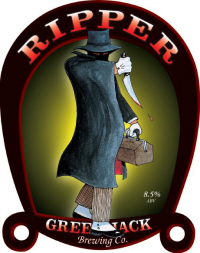 Green Jack Ripper One of very many great breweries in the east of England, Green Jack is a well appreciated, award winning and commercially savvy cask ale brewer that’s recently started doing some interesting things with bottles. Tim Dunford and his wife and business partner Lee haven’t had an entirely smooth ride – their first brewery in Oulton Broad ceased trading eight years after opening in 1993, but they were soon back with a new one, behind Lowestoft’s Triangle Tavern, which claims to be the most easterly real ale pub in England. Early in 2009 they expanded to a much bigger standalone plant and are now one of the largest brewers in the region.
Tim has long been unafraid to offer stronger beers in cask besides the session regulars – his Ripper (8.5%) strong ale, a barley wine with a deliberate nod to Belgian tripels, is a renowned local award winner, and Baltic Trader Imperial Stout (10.5%) also appears intermittently on the bar. Both these are now available bottle conditioned in attractive 750ml flip top bottles with labels detailing not only the best before date but the dates when the beer was brewed and bottled.
Ripper seems to have taken to the bottle best. It’s a hazy blond beer with a fine orangey-white head and a citric, slightly minerally and sulphury aroma, tones of burnt rubber mixing incongruously with peaches and cream. A firm but dry palate has a grainy, roast quality with a herbal hint – I’m not sure if coriander was actually used but there’s a definite Belgian herbal flourish — and a distinct note of apricot jam. It’s fruity and very spicy, leading to a dry finish with more apricot, obvious alcohol and complex shifting spice textures. Rooty hops finally emerge on a long development – the brewery prides itself on generous use of whole hop cones and while there’s plenty of hop character here, it’s intriguing rather than overstated. Very decent.
To download BEER if you’re a CAMRA member, see http://www.camra.org.uk/page.aspx?o=beer.
To find out more about CAMRA membership, see http://www.camra.org.uk/page.aspx?o=joinus.
Read more about this beer at ratebeer.com: http://www.ratebeer.com/beer/green-jack-ripper/37914/
Top Tastings 2010 (Granite)
ABV: 6.5%, 8% and 10.4%
Origin: Millom, Cumbria, England
Website: http://hardknottale.co.uk/
An extended review of a beer featured as a new real ale in a bottle on the bottled beer review page in the February 2011 issue of BEER magazine, sent free every quarter to CAMRA members, who can also view it online. The magazine is additionally available in selected newsagents.
 Hardknott Infra Red As Hardknott Dave, Dave Bailey is one of the most informed and perceptive commentators on the beer blogging scene, and a champion of great beer made with imagination and pride. Dave is also a brewer – originally a landlord, at the idyllic Woolpack Inn at the top of Eskdale in the Lake District, he added a brewery partly because he thought it would help get the pub into the Good Beer Guide. His beers became so successful he’s now shed the pub to concentrate on beer production full time on an industrial estate in nearby Millom. Being both a campaigning beer writer and a brewer is rather brave as there’s an obvious test for checking if you practice what you preach. Happily, it’s a test Dave passes with distinction.
Hardknott, named after the steep pass that links Eskdale with the Duddon Valley, is one of a small but growing band of British brewers experimenting with bottles of what in the US would be called “Extreme Beer” – generally strong, with an eclectic approach to style, full of big and vivid flavours and amenable to attentive sipping. The fine trio of bottle conditioned beers I tasted all fit this profile.
Infra Red (6.5%) is a typical style fusion – it claims to be an oxymoronic ruby red India Pale Ale, but it could be a particularly hoppy US-style amber ale and the dry but biscuity character also suggests a dry brown from the other side of the M6. It’s a rich amber-red beer with a light and fine orangey-white head, made from pale and crystal malts and Cascade and Centennial hops.
 Hardknott Æther Blæc A malty and fruity aroma has a liquorice note, and a very biscuity and toasty palate yields big thistly grapefruit and lychee hop flavours nonetheless well balanced by quite a soft sweetness. A long, robust and satisfying finish offers bitter orange marmalade and lightly charred, slightly tannic malt tones, with a late gritty note.
Æther Blæc (8%) is an eccentric take on an imperial stout, aged in a cask which previously held 29-year-old Caol Ila Islay malt whisky. This black beer pours with a thick and creamy deep beige head and a leatherish, creamy, fruity aroma with a note of herb liqueur and the definite salty iodine tang of Islay malt. Whisky notes are also immediately evident in a malty, lightly fruity and slightly woody palate, with smoky and phenolic notes shading towards disinfectant, though smoothed wonderfully by malt.
 Hardknott Granite 2009 A touch of dark marmalade on the swallow leads to a full, warming and slightly tart fruity finish, with touches of cedar smoke and ash. Not the most complex wood aged beer I’ve tried but highly impressive – it would be interesting to taste again in a couple of years, though it might not last quite as long as the whisky did!
And finally Granite (10.4%), a dry hopped barley wine named for the local rock that provides a natural filter for Dave’s brewing water. This very dark ruby brown beer with a fine mid-beige head has a tart fruit and malt aroma with a whiff of Stilton cheese. That cheese note, intriguing rather than offputting, persists on a full, rich caramel malt palate that’s tantalisingly complex. Chewy hops emerge, then sweetness, then mouth-numbing alcohol, with spicy, fruity esters escaping as the beer warms in the mouth. A vinous, sherryish finish yields chewy roast and slightly burnt tones, plum jam and tobacco.
This beer should definitely age well – Dave is known for his polemics against best before dates on beers like this, and my bottle bears the legend “best before February 2015 but probably better after.” Narrowly the pick of a very strong bunch, and hopefully the sign of great things to come from a very talented brewer.
To download BEER if you’re a CAMRA member, see http://www.camra.org.uk/page.aspx?o=beer.
To find out more about CAMRA membership, see http://www.camra.org.uk/page.aspx?o=joinus.
Read more about these beers at ratebeer.com:
http://www.ratebeer.com/beer/hardknott-infra-red/129597/
http://www.ratebeer.com/beer/hardknott-aether-blaec/124172/
http://www.ratebeer.com/beer/hardknott-granite-2009/127218/
Originally published in BEER November 2010. Click on the links for extended reviews of the beers mentioned.
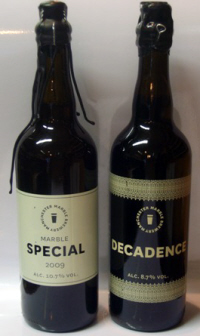 Marble Special and Decade. Pic from the Beer Emporium: www.thebeeremporium.com While it’s great that good beer in Britain is a ubiquitous, everyday drink, the way in which the British perceive beer as an everyday, unpretentious quencher sometimes deters brewers from pushing the limits of their art. In countries where the development of craft brewing took a different course, such as the USA and Italy, numerous beers are marketed as rare and relatively pricey artisanal products – the sort of thing you might give as a gift and not be thought a cheapskate.
One brewery daring to challenge the “ordinariness” of British beer culture Manchester’s Marble Arch brewpub, which now offers a pair of strong limited edition beers, Special Barley Wine and Marble Decadence Imperial Stout, conditioned in 750ml Bordeaux-style bottles with wired and waxed corks, at an eyebrow-raising but realistic price of £9.99 a bottle. Both are excellent but the stout (8.7 per cent) impressed me most, with its spice cake, tropical fruit and Marmite aroma, a palate bursting with pineapple syrup, lemons, raisins, plums and crystallised ginger and a long drying chocolate finish with a charcoal touch.
Moor brewery in Somerset has enjoyed an upmarket makeover recently, with an American influence most obviously explained by the Californian origins of its current owner-brewer Justin Hawke. Moor JJJ IPA (9 per cent), in an elegant 660ml bottle with art nouveau label, is a “triple” IPA that could challenge many West Coast examples, bursting with complex hop character: roses, fresh hay, citrus, caramel, coconut and cracked pepper but still grounded, just, by toasty and fruity malt.
Publicity-shy family independent Samuel Smith’s of Tadcaster has recently added to its range of excellent but filtered specialities a barley wine, Sam Smith’s Yorkshire Stingo (9 per cent). This is not only bottle conditioned but matured for over a year before bottling in oak casks, some of which are over a century old. The deep burgundy brew has spiced toffee and grapes in a cakey aroma, and a broad oak note colouring a malty, nutty palate with red fruit and spiced candy – serious quality stuff.
An anniversary is a good excuse for a special brew and Wye Valley, Herefordshire-based suppliers of one of Britain’s best bottle conditioned stouts, mark their quarter century with Dorothy Goodbody’s Imperial Stout (7 per cent), a limited edition of 6,000 bottles in attractive presentation boxes. This sweetish dark ruby beer has plenty of chocolate, coffee and blackcurrant with a crackle of roast in an unctuous, slightly sticky finish. It’s enjoyable and satisfying, though lacking in the challenging and intense flavours of established imperial stouts.
The 18th century brewhouse at Traquair House in the Scottish Borders remains a unique source of strong and old-fashioned beers fermented in the original unlined oak vessels, and owner-brewer Catherine Maxwell-Stuart has marked the second decade of the third millennium with 20,000 stylish bottles of Traquair 2010 (10 per cent). Vanilla and cloves on the aroma herald a beer that’s firm and generously malty, with banana and oak, and minerals, wood and vine fruits on the finish. Although filtered, Traquair beers age well and this one should keep developing toward’s the millennium’s third decade.
|
Cask 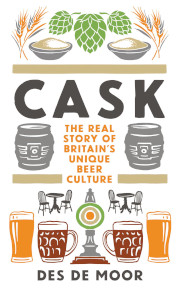 This pioneering new book explains what makes cask beer so special, and explores its past, present and future. Order now from CAMRA Books. Read more here. This pioneering new book explains what makes cask beer so special, and explores its past, present and future. Order now from CAMRA Books. Read more here.
London’s Best Beer 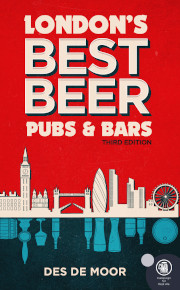 The fully updated 3rd edition of my essential award-winning guide to London’s vibrant beer scene is available now from CAMRA Books. Read more here. The fully updated 3rd edition of my essential award-winning guide to London’s vibrant beer scene is available now from CAMRA Books. Read more here.
|

















